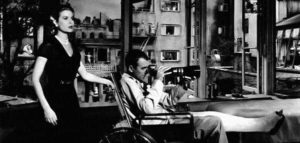The Godfather is considered one of the greatest movies our time. It was the top grossing movie of 1972, won multiple Academy Awards and catapulted the organized crime genre into the popular culture limelight. The movie, following the story of the powerful Italian-American crime family, the Corleone’s, is a perfectly paced, character-driven drama crammed with fantastic dialogue, edge-of-your-seat scenes and an unforgettable storyline all told from the point of view of the criminals. It is a beautifully shot cinematic masterpiece featuring impeccable acting, music choices and overall look, making it truly compelling, powerful and memorable. Don Corleone is a man known for his ability to make decisions very quickly. He is a highly respected man who knows exactly what he wants and is able to execute his thoughts decisively, thus commanding respect through steadfast leadership. In his famous words, “I’m gonna make him an offer he can’t refuse,” he makes it clear that he doesn’t mess around during negotiations. An element that stood out was how he handled his business. Im not recommending that you go about threatening or killing each another to demand respect, but by knowing what you want from your business and being unwavering in your decisions, you stand a far better chance of succeeding in the cutthroat world of business. He got straight to the point during business decisions and made compelling offers that were attractive to the opposite party. Also, he worked closely with his team to ensure they were making the right choices, but at the same time choose his team wisely so that he could trust that they will make the right decisions. He wasnt hesitant; hesitation can all too easily lead to missed opportunities. Business is Business, Know your competition and remain one step ahead of the game in order to grab opportunities as they surface and beat the competition. In the words of Michael Corleone, “it’s not personal, Sonny. It’s strictly business.” Sonny Corleone was a character known for his short temper and when he reacted impulsively and emotionally towards a photographer, this nearly killed his brother-in-law, which led to his demise. In business, there are winners and there are losers but at the end of the day, business is business and there is no point in reacting emotionally when it comes to making decisions. When people base their business decisions on emotion, mistakes happen, so eliminate emotion and ego from the equation. It shows the incidents which are wrong according to the law but as an audience we feel connected towards characters. It spell bounds the audience in a manner that everything looks right and appropriate. Nothing seems to be inappropriate which we can disapprove. A critical conversation read about the film was about the details of organised crime in the film and how much overall power the godfather had but No scene in movie shows any harm to civilians. It also does not show any women trapped into illegal and antisocial activities like prostitution. This movie does not show any wrecked life due to gambling. The movie shows mafia life from inside. There is a scene in which a person comes to Don. Don says ” Why did you go to police? You should have come to me. Your daughter is suffering on a daily basis. If you would have come to me then your enemy would have become mine, And then they would fear you”.This clearly shows the influence of Godfather. This movie would be considered a great film because It shows the text of morality and humanity with a brushing of fear. It is a story of power with controlled manner. It a story of influence but with texture of humanity. It is a story of destruction but with clear depiction of family values. It is a masterpiece in real sense.
Sources
https://www.hollywoodreporter.com/review/godfather-review-1972-original-movie-986404

